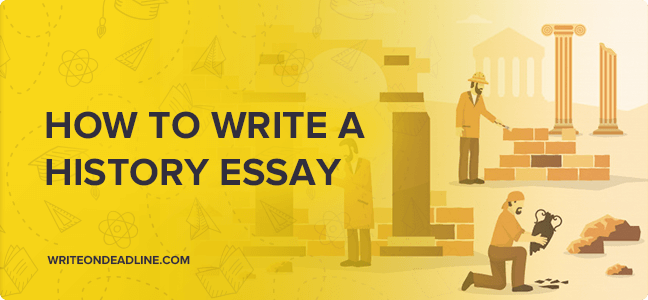How to Write a History Essay

Table of Contents
Introduction
The Importance of Writing a History Essay
Writing a history essay allows you to explore the complexities of the past, understand different perspectives, and sharpen your analytical skills. It’s not just about recalling events but interpreting and presenting them in a coherent narrative.
Brief Overview of the Essay Writing Process
The process involves selecting a topic, conducting research, formulating a thesis, drafting the essay, and revising your work to create a polished final product.
Understanding the Assignment
Interpreting Essay Questions
- Read Carefully: Identify keywords and understand the scope of the question.
- Clarify: If unsure, ask your instructor for clarification.
Importance of Understanding Marking Criteria
- Expectations: Know what your instructor is looking for, such as argument strength, evidence, and structure.
- Self-Assessment: Use the criteria as a checklist when writing and revising your essay.
Research and Sources
How to Conduct Historical Research
- Start Broad: Begin with general texts to understand context.
- Go Specific: Look for specialized works on your topic.
Evaluating the Credibility of Sources
- Authorship: Check the qualifications and reputation of the author.
- Publication: Consider where and when the source was published.
- Evidence: Look at the source’s documentation and argumentation.
Note-Taking Strategies for Historical Information
- Organize: Group notes by theme or argument.
- Paraphrase: Write information in your own words to ensure understanding.
- Cite: Keep track of source information for citations.
Thesis Statement
Definition and Significance of a Thesis Statement in a History Essay
A thesis statement is your central argument or claim, providing direction and structure to your essay.
How to Formulate a Strong Thesis
- Answer the Question: Directly respond to the essay prompt.
- Be Specific: Make your thesis as precise as possible.
- Arguable: Ensure your thesis presents a clear, debatable point.
By following this guide, you will be well-equipped to craft a compelling history essay that not only recounts facts but also tells a story that resonates with the reader.
Standard Structure of a History Essay
Introduction
- Purpose: Introduce the topic, provide background, and present the thesis.
- Components:
- Hook: Grab the reader’s interest.
- Background: Brief context or summary of the main issues.
- Thesis Statement: The central argument of your essay.
Body
- Function: Supports the thesis with evidence and analysis.
- Structure:
- Paragraphs: Each should start with a clear topic sentence.
- Evidence: Incorporate both primary and secondary sources.
- Analysis: Explain how the evidence supports your argument.
Conclusion
- Role: Reinforce the thesis and summarize key points.
- Elements:
- Restatement of Thesis: Reiterate your main argument.
- Summary: Brief recap of the body’s main points.
- Significance: Address the ‘so what?’ question—why is this important?
Writing the Draft
Tips for a Clear and Coherent First Draft
- Outline: Use your structure as a guide for what to include.
- Clarity: Write simply and directly to express your ideas.
- Cohesion: Ensure each sentence and paragraph flows logically to the next.
Balancing Factual Information with Analysis
- Context: Provide enough detail to inform but not overwhelm.
- Purpose: Use facts as a foundation for your analysis, not as the analysis itself.
Using Evidence
Integrating Primary and Secondary Sources
- Primary Sources: Direct evidence from the time period you are studying.
- Secondary Sources: Scholarly analysis and interpretation of the primary sources and events.
- Balance: Combine both types of sources to provide depth to your argument.
Citing Sources Appropriately
- Referencing Style: Use the appropriate citation style as required by your assignment (e.g., Chicago, MLA, APA).
- Accuracy: Ensure all quotes, paraphrases, and summaries are accurately cited.
- Bibliography: Include a complete list of sources at the end of your essay.
Analysis and Argumentation
Techniques for Analyzing Historical Events or Figures
- Contextualize: Place events or figures within the broader historical landscape.
- Compare and Contrast: Look at similarities and differences to deepen understanding.
- Critical Thinking: Question motives, causation, and impact.
Constructing a Logical and Persuasive Argument
- Logical Structure: Build your argument step by step, ensuring each part makes sense with the others.
- Evidence-Based: Support each claim with appropriate evidence.
- Counterarguments: Address potential objections to strengthen your argument.
Remember that writing a history essay is not just about presenting what happened but also about crafting an argument that provides insight into how and why events occurred. Your essay should demonstrate your ability to think historically and provide a nuanced understanding of the past.
Editing and Proofreading
Strategies for Effective Editing
- Take a Break: Step away from your essay before editing to gain a fresh perspective.
- Read Aloud: This can help catch awkward phrasing and run-on sentences.
- Peer Review: Have someone else read your work to catch errors you might have missed.
- Checklist: Create a list of common mistakes you make and check for those specifically.
Common Grammatical and Stylistic Errors to Avoid
- Comma Splices: Use a semicolon or period to separate two independent clauses, not just a comma.
- Sentence Fragments: Ensure every sentence has a subject and a verb and expresses a complete thought.
- Passive Voice: Use active voice whenever possible for clarity.
- Wordiness: Be concise. Remove unnecessary words or phrases.
Conclusion
How to Write a Compelling Conclusion
- Synthesis: Instead of simply summarizing, show how the points you’ve made fit together to support your thesis.
- Significance: Explain the broader implications of your findings.
- Final Thought: Leave the reader with a strong final sentence that underscores the importance of your argument.
Referencing and Bibliography
Guide to Creating a Bibliography
- Formatting: Follow the specific citation style guide required for your history essay (e.g., Chicago Manual of Style is common in history).
- Ordering: List your sources alphabetically by the last name of the author.
- Accuracy: Ensure full details are included for each source: author, title, publisher, date of publication, and page numbers if applicable.
Annotating Sources
- Purpose of Annotations: Briefly describe the source’s content, evaluate its reliability, and discuss its relevance to your topic.
- Structure: Each annotation should be concise and focus on a summary, assessment, and a reflection on the source’s use.
Remember, editing and proofreading are as critical as writing the draft. They ensure your argument is clearly and effectively presented. A well-crafted conclusion and meticulously prepared bibliography not only show your attention to detail but also strengthen your credibility as a historian.

